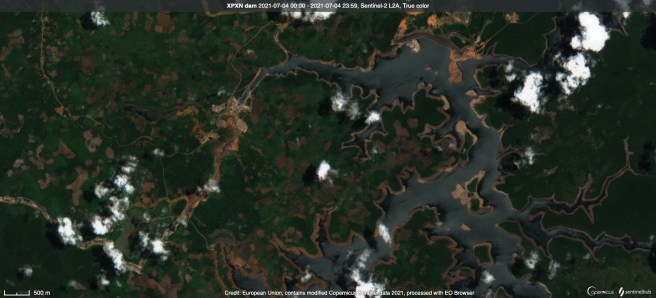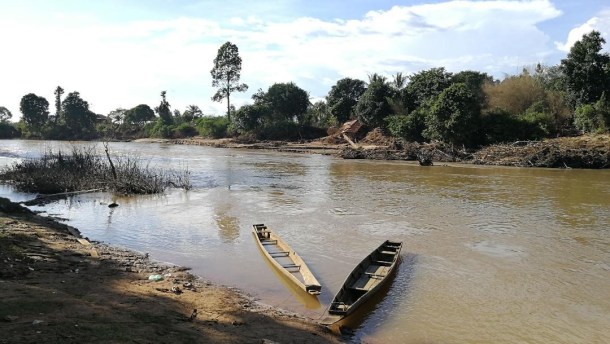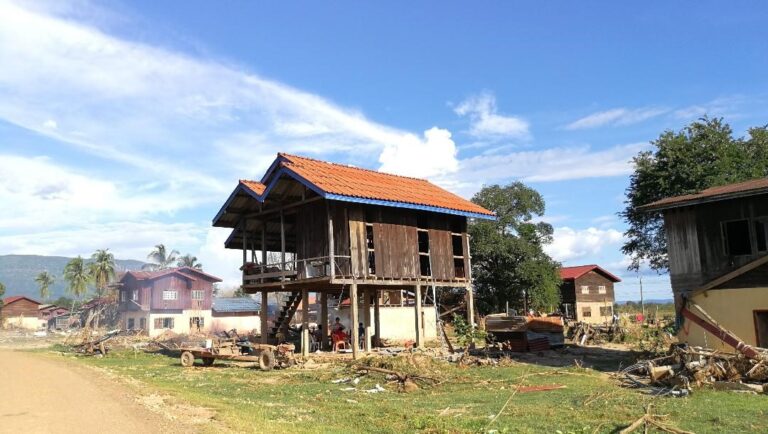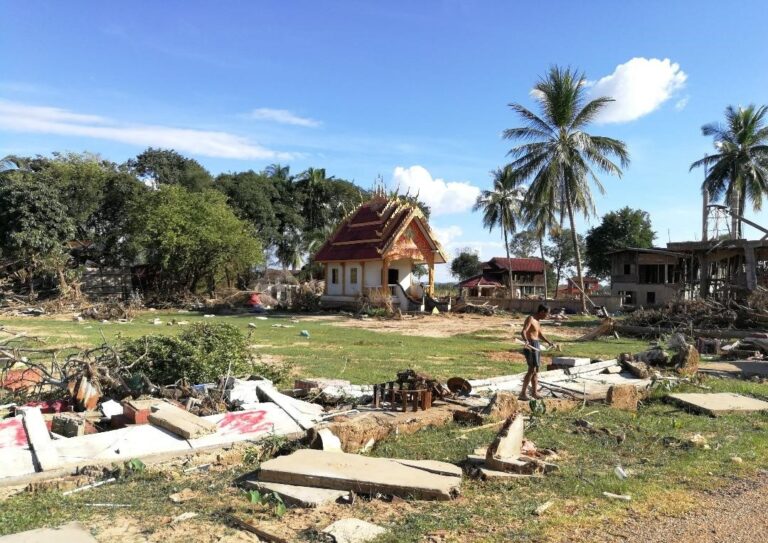By: Phairin Sohsai, Thai-Mekong Campaign Coordinator for International Rivers
This article was originally featured in Bangkok Tribune.
Countless examples of dam disasters, the Xe Pian-Xe Namnoy hydropower project in Southern Laos included, point to a countless number of risks to local communities and environments, but these risks are seldom integrated into the costs of the project. Instead, the risks are borne by local and indigenous river communities who are excluded from decision-making processes, writes Phairin Sohsai on the third anniversary of the Xe Pian-Xe Namnoy dam collapse.
Three years ago, on 23 July, 2018, a saddle dam of the Xe Pian-Xe Namnoy hydropower project in Southern Laos collapsed, unleashing a wall of water and debris. The flood submerged entire villages, destroying homes, crops, and livelihoods. At least 71 people reportedly died and some bodies were never recovered. Thousands more were left homeless.
The floodwaters extended far downstream, crossing the border into Cambodia, where an estimated 15,000 people were impacted by flooding, which also damaged their farms, property, and livestock.
The injustice of hydropower: Prioritizing profits over people
“Thousands of survivors lost everything and continue to face uncertainty and neglect… Governments, as well as companies and banks, stand to profit handsomely from the hydropower project, yet communities who lost everything have received only broken promises.”
These were comments made by a group of UN rights experts in April 2020 who called for immediate action to address human rights violations experienced by survivors of the dam collapse in Laos. Today, many survivors have yet to be fully compensated for the losses and harm suffered.
For years, families have relied on government support in the form of monthly food and cash allowances consisting of 250,000 kip (~25 USD) and 20 kilograms of rice per person. These allowances, which were both inconsistently distributed and inadequate for survival, have been cut off or reduced since January 2021 with no warning from local authorities, according to recent media reports.
Survivors continue to wait for permanent housing. As of last month, only 111 families have been moved into permanent housing. Of the 700 houses financed by the project developers, only 182 are expected to be completed by end of the year, extending uncertainty and hardships for many survivors, some of whom have sold their temporary shelters to make ends meet.
It’s clear that the interests of the project and its backers continue to be prioritized over the needs and rights of the people most impacted by the dam disaster.
Following the collapse, the Lao government publicly pledged to undertake a comprehensive and transparent investigation into the causes of the disaster and to hold those responsible to account. However, the government-commissioned investigation report, which concluded that construction flaws were the cause of the collapse, has never been released to the public. The project developers denied the report’s findings, but have yet to provide evidence to back their claims.
Multiple complaints and challenges have been made by civil society groups who have called on project developers, investors, financiers and insurers to address ongoing human rights violations, including against two of the Korean developers through the OECD complaint mechanism. Despite the complaint being accepted, it was discontinued due to the Korean companies’ refusal to engage in the process.


A pattern of loss and destruction
The Lao dam disaster is not an isolated incident. Just months ago, on February 7, 2021, an avalanche into the Rishiganga River sent a flash flood through the Himalayan valley, the massive wall of water overtopping two dams. At least 31 people were reportedly killed and another 175 are still missing in Chamoli district and other parts of the Uttarakhand state of India, according to media reports.
Avalanches and other dangerous occurrences are expected to become more frequent with climate change, and the construction of mega-infrastructure such as hydropower dams only heightens the risks of future disasters.
In June of 2013, a cloudburst caused massive floods and landslides in Uttarakhand, resulting in the number of deaths, reported at about 6,000 people. An investigation committee initiated by the Indian Supreme Court found that the construction of hydropower dams increased the severity of the incident. Despite a court order that no new hydropower dams be constructed in the regions of Uttarakhand, 37 hydropower projects are under operation as of 2018, with two more awaiting clearance.
In Colombia, poor ecological management of the Ituango hydroelectric dam by its utility and energy company caused a similar disaster to occur, according to media reports. Between 28 April and 7 May, 2018, three landslides blocked the flow of water through the dam’s diversion tunnel, causing the reservoir to fill to unsafe levels. Days later, the tunnel cleared and released a flash flood that wiped out an entire village, two bridges, a school, and a clinic. At least 25,000 people were forced to evacuate, and over 100,000 people living downstream were affected.
Countless other examples of dam disasters on every continent point to a pattern of devastation and destruction.

The bottom line
Dams pose huge risks to local communities and environments, but these risks are seldom integrated into the costs of the project. Instead, the risks are borne by local and indigenous river communities who are excluded from decision-making processes. When disaster strikes, residents of areas near the dam sites are often left unsupported, their fundamental rights to a safe home, livelihoods, and dignity, denied.
A series of international meetings in the second half of 2021, including the World Hydropower Congress and the UN Climate Change Conference, will be discussing options for a future global green economy. The International Hydropower Association and partners will be pushing the false narrative that hydropower dams are a ‘sustainable’ solution to today’s climate and biodiversity crisis.
It is imperative that international leaders challenge these false solutions and stop supporting future dam projects. Large dams destroy rivers and local communities, while those who profit skirt responsibility. History has shown this time and time again; it’s time to heed the warning.
Featured photo: The damage observed in some villages in October 2018 following the Xe Pian-Xe Namnoy hydropower project in Southern Laos. Credit: International Rivers

